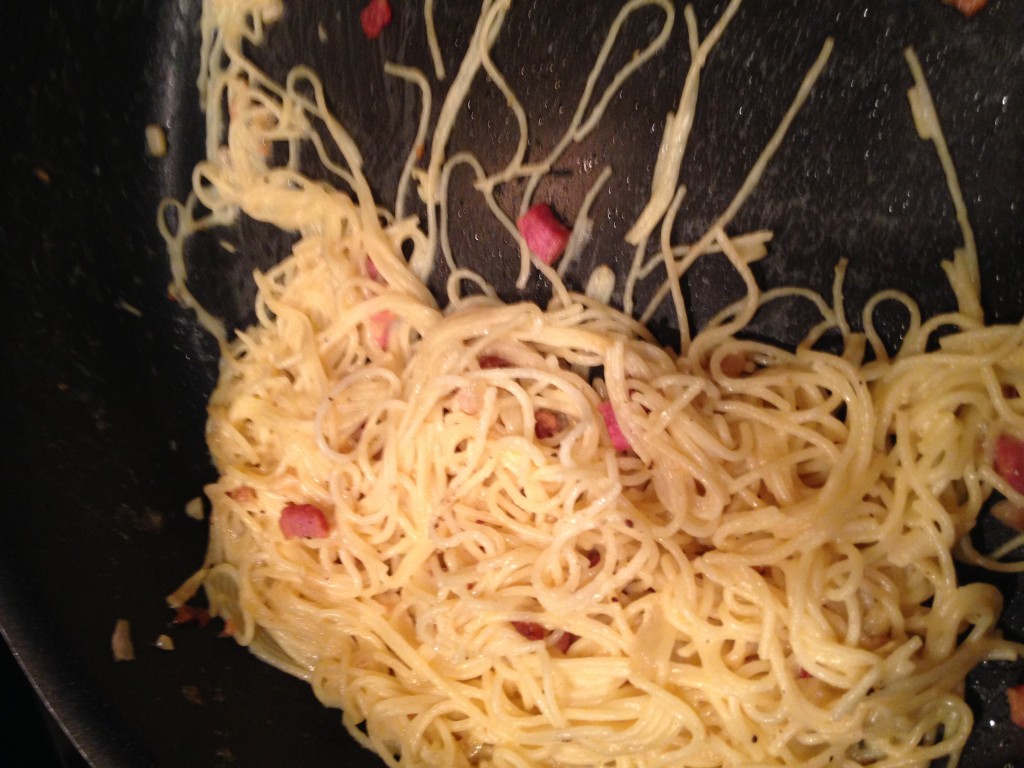Last week Carol tasked me (I volunteered, actually) with making a “double batch” of bread, in the hopes of making 3 sandwich-style bread loaves for hamburgers at an office event for Carol.
While it turned out very tasty, it was unfortunately too moist, and didn’t rise in the pan enough to really make big enough slices for hamburgers. We cut each loaf in half, making six half-loaves; slightly sweet and airy, it makes a great morning snack with a little butter.
Our recipe assumes you have a scale set to measure grams, and a mixing stand (Kitchenaid or similar). It can be done by hand, but it’s a good bit of work.
Warning: This is one of those recipes that isn’t really “exact” – some people like their breads a little moister, some a little dryer. Dryer often gives a higher rise to the loaves, with a slightly more “packed” crumb texture; moister tends to make shorter loaves with a little more airiness. It takes a few tries to get the bread “just like you like it”, but it’s always delicious!
Agave Nectar Bread – Double Batch
Ingredients
678 grams sprouted wheat flour
240 grams bread flour (also have an additional cup on standby, if the dough is too moist)
1 cup Agave nectar
3 cups warm water (100-110 F)
2 teaspoons salt
4 teaspoons active dry yeast
2 tablespoons salted butter, melted or very soft, but not hot
Directions
Mixing
Put all ingredients except butter into mixing bowl. Use paddle attachment and mix until incorporated, a couple of minutes. If the dough is still very moist, add 1/4 cup of flour and mix again until incorporated; if still very moist, repeat adding flour and mixing, up to an addition of a cup.
Replace paddle with dough hook, cover the bowl loosely with a towel, and let rest 15 minutes.
Remove the towel and start kneading with the dough hook on Speed 1. Slowly add the melted butter. Knead for 10-15 minutes.
First Rise
Turn dough out into a large bowl or large tall square plastic container (we normally coat the inside of the container with a little butter or olive oil first). Cover with the towel and let rise an hour, to an hour and twenty minutes, so the dough is at least double its original size.
We have a large rubber band we put around our square container, right at the initial level of the flour. This makes it easy to see the rising progress.
We also find that putting the dough in a draft-free space away from bright light helps yeast do its thing; yeast doesn’t like the spotlight!
Second Rise
Turn the dough out onto a lightly floured surface and punch down lightly. Split the dough into two large loaf pans or three small loaf pans.
Let rise again for an hour. If you have a proofer, set to 81 F.
Preheat over to 350 F when the second rise is nearly done.
Cooking
Place pans in preheated 350 F oven for 20-40 minutes. Check internal temperature at center at the end of 20 minutes… you’re looking for 190 F. Continue to check about every 5 minutes, usually not longer than 40 at most, depending a lot on how moist the dough was. If the top starts to get too brown, you can put a sheet of foil loosely over the top.

